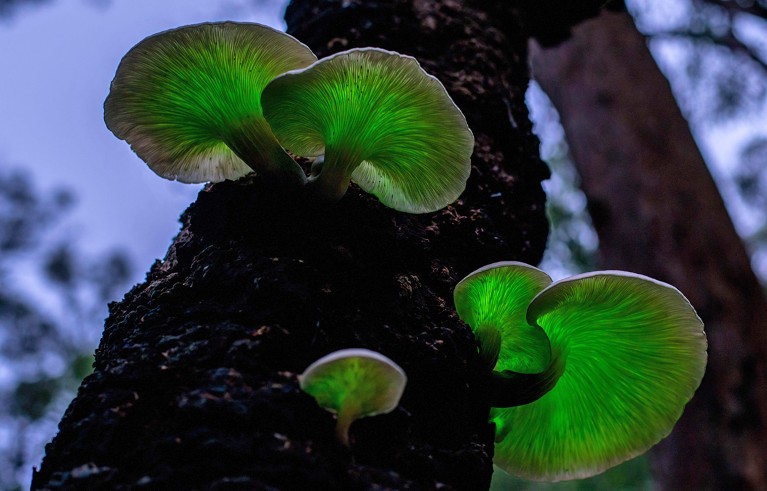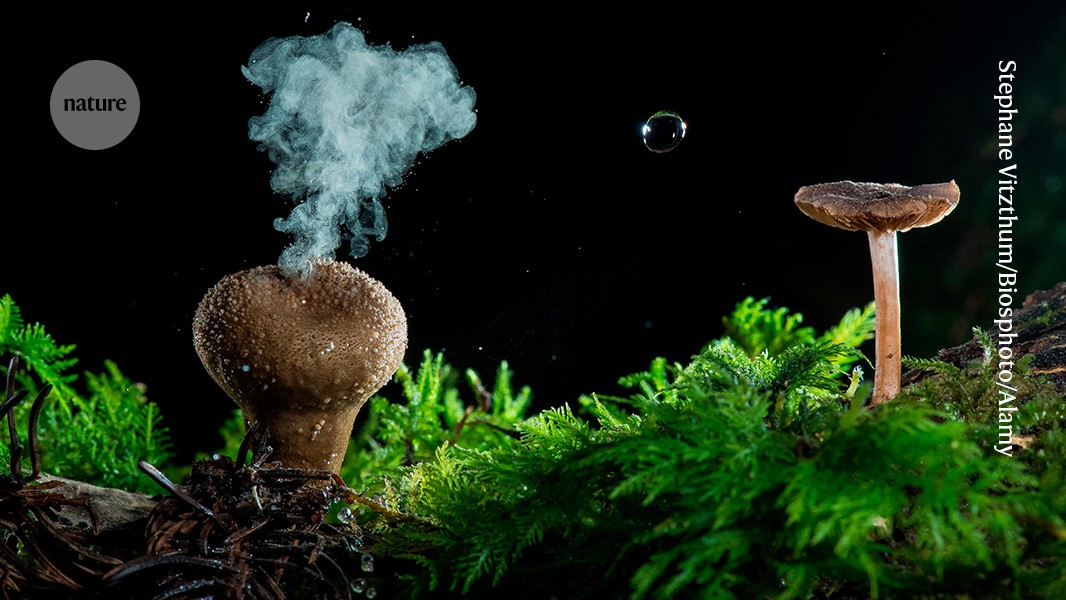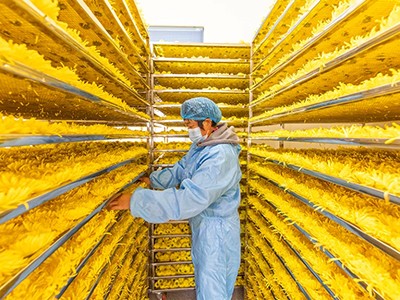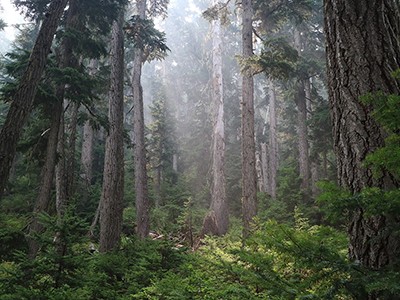Close Encounters of the Fungal Kind: In Pursuit of Remarkable Mushrooms Richard Fortey William Collins (2024)
Richard Fortey, best known as a palaeontologist, has left the fossils of extinct marine organisms behind in this lovely book about fungi and his long-standing enthusiasm for field mycology. In Close Encounters of the Fungal Kind, Fortey describes his global experiences with fungi, from mushrooming in the woods of Oxfordshire, UK, and the rainforests of New South Wales, Australia, to dining on earthy porcini (see ‘Mushrooms and their scientific names’) in northern Italy. There is a good deal of mycology here, too, with welcome caution on the subjects of mycorrhizal ecology and fossil fungi, and a modest endorsement of the therapeutic uses of psychedelic mushrooms.
In a beechwood in the Chilterns, UK, Fortey marvels at the emergence of circular patches of a fungus from the fallen trunk of a cherry tree, “like a prisoner prospering after release from confinement”. As these fruit bodies develop, they become corrugated, then grow teeth from which “countless colourless sausage-shaped spores” emerge. This is the toothed crust, “a trailblazing saprotroph”. It is followed, as the months and years pass, by the sulfur polypore and other mushrooms whose colonies, or mycelia, slowly dissolve the tree’s wood.
Beside the bluebells and celandines on the woodland floor, Fortey searches for morels, “the most delicious of all fungi”. Elsewhere, he finds ceps and chanterelles that have not been exterminated by overpicking, as well as field mushrooms and parasol mushrooms on grasslands unspoiled by fertilizers.
Fortey samples a drop of the latex exuded from an inedible mushroom called the fiery milkcap, to confirm its identity. The taste began sweetly, he says, moved to hot and peppery, and proceeded to the sensation of toothache with a long-lasting afterburn.
A fungal nail-biter
The story of the nail fungus is entertaining. This species forms little white discs peppered with black dots on horse dung, and is a rare find. Surprised to spot it in a flowerbed in Henley-on-Thames, UK, Fortey engages in some mycological detective work. Recalling preferred sites for this species, he surprises a homeowner by knocking on her door and inquiring whether her garden manure came from the New Forest. This is a perfect location for the fungus, where it grows on the dung of the wild ponies. Rather than calling the police, she confirms his suspicion, allowing Fortey to pat himself on the back for his sleuthing.
The plant poisons that shape our daily lives
On the subject of fungal evolution, Fortey addresses how forming a gilled cap protects the exquisite mechanism of spore discharge in mushrooms from disturbance by raindrops. He also describes some other devices that fungi use to propel spores into the air, including the spectacular squirt guns of the cup fungi, and the famous hat thrower. This is all familiar material for mycologists, but will tempt other readers to explore the magnificence of these microballistic devices.
Fossils, fiction and facts
Returning briefly to his academic home turf, Fortey investigates an enigmatic fossil called Prototaxites, from the Devonian period (419 million to 359 million years ago). This 8-metre column of interwoven filaments has been interpreted as a giant mushroom by some investigators and a lichen by others. Fortey raises the objection that a fungus of this size could not have powered its growth by decomposing the tiny plants of the Devonian or by partnering with them through mycorrhizal connections. The fact that lichens are small and tend to be flat is also at odds with the development of this huge trunk. Other problems include the impossibility of an enormous mushroom stem staying upright without the strength of woody tissues, as well as the absence of fossilized spores from this putative spore-producing sex organ. We do not know what Prototaxites was, but we can be sure that it was something more interesting than a make-believe mushroom.
Fortey is similarly dismissive of some anti-Darwinian ideas about mycorrhizal fungi, such as a purported commitment to the success of the communities of plants whose roots they infect. Mycorrhizal fungi are, and must be, as selfish as the rest of creation, hell-bent on extracting as much food from their forests as the other inhabitants do. When this happens to work through supporting trees, it is all well and good, but researchers must be cautious about suggesting that mushrooms are more saintly than the rest of nature.

The ghost fungus emits a green glow.Credit: Petar B photography/Alamy
Superstitions and fairy tales have been encouraged by the hallucinogenic properties of some mushrooms and the toxicity of others, and persist in the popular imagination. Perhaps this silliness will wane as we recognize the practical uses of psilocybin from magic mushrooms to treat severe depression and other mental illnesses. Fortey dedicates a chapter to this topic. On the pre-clinical history of psychedelic use, he mentions Timothy Leary, an enthusiastic shroomer, whose theory about the alien origin of mushrooms is one of the least enlightening things ever written about fungi.
From the hallucinogenic to the hideous, Fortey introduces “the ugliest fungus I know”, which “fruits in the Australian rainforest”. This is Drechmeria gunnii, a parasite that extends its blackened stalk from the body of a huge moth larva after it has digested the insect from the inside out. I have never seen this fungus, but its relatives, species of Cordyceps, are gorgeous organisms that shoot clouds of filamentous spores from nipples that cover the heads of their stalks. The dust of these spores dancing in a beam of sunlight is spellbinding.
Fortey is more enamoured with Australia’s ghost fungus, which forms bioluminescent brackets on rotting logs and has “a greenish tinge that gives it a spectral quality, as though the wood itself were holding out illuminated hands”. The book is full of evocative descriptions born from deep personal experience.
The ‘Mother Tree’ idea is everywhere — but how much of it is real?
Fortey spent his career as a palaeontologist at the Natural History Museum in London, specializing in the subject of his book Trilobite (2000). Now, he is sharing his love of fungi, which for him have been a “source of pleasure and perplexity for more than sixty years”. The perplexity comes from the difficulty of identifying mushrooms, although Fortey has become more skilled at this than most mycologists. He writes: “It could be said that the identification of a mushroom employs every human sense except hearing, but that has not stopped me wishing that a particularly obscure species could tell me its name.”
The tiny artillery fungus offers one of the few exceptions to the silence of the fungal kingdom. The fruit body of this masterpiece of evolutionary engineering makes a ‘pop’ when it propels its spore capsule skyward. Some cup fungi are musical, too, producing a fizzing sound when they shoot puffs of spores into the air. Neither action helps with fungal identification, but these remarkable mechanisms add to the sense of wonder in mycology.
A clear view of fungi, expunging superstitions and pseudoscience, comes from appreciating how their peculiarities have evolved as solutions to the challenges of life. Fungal growth and reproduction involve mechanisms that are absent from the rest of biology, but are they any stranger than the way that humans exist as mobile ecosystems of trillions of animal and microbial cells? In Close Encounters of the Fungal Kind, Fortey does mycology a great service by transcending the strange with science, and pushing aside fashionable nonsense about fungi with his eloquent writing and affable voice.




